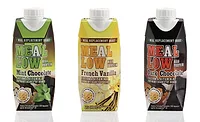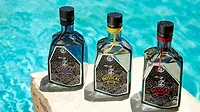Beverages featuring domestic fruits hit on locavore trends
Familiarity and clean label also resonates with consumers

As Dorothy told audiences, “There’s no place like home.” Aside from being a memorable movie quote, this notion has taken on a deeper meaning in the food and beverage industries as local-buying trends and farmers markets are being celebrated by more and more consumers.
“Millennial consumers have really been the drivers of wanting to know more about where their food comes from and how it gets to them,” says Jeannie Swedberg, director of business development for Selah, Wash.-based Tree Top Inc. “This has given rise to the local or locavore trend — a movement to eat foods that are sourced locally and responsibly — domestically sourced fruit — which crosses over right into the sustainability trend. Fewer food miles, knowing where food comes from and supporting local agriculture all blend together in the use of domestic fruit.”
Thomas Payne, industry specialist to the U. S. Highbush Blueberry Council, Folsom, Calif., notes how blueberries can support this trend. “Not only do blueberries have an all-American association as a native American fruit, they are an excellent choice for product developers who want to project a responsible carbon footprint,” he says. “This year-round availability and proximity are reasons for their popularity in product formulation.”
In addition to locavore trends, the familiarity of domestic fruits like apple, blueberry, strawberry, raspberry, cranberry, peach, grape, pomegranate and cherry make them popular options for beverage formulation.
“They are flavors and fruit that are familiar to consumers and well-liked by them,” Tree Top’s Swedberg explains. “Also, many of these flavors blend well together or with other fruit/flavor combinations that are less familiar, i.e. strawberry kiwi, raspberry passion fruit, raspberry lemonade. Berry lemonade combinations are popular. They bring flavor innovation plus a natural color to a traditionally popular beverage.”
Additional trends that experts mention as contributing to the usage of domestic fruits are health and wellness, natural and organic, and clean label.
“Healthy, good-for-you food and beverage products continue to be popular among the U.S. population,” says Heather Young, beverage development consultant for Mother Murphy’s, Greensboro, N.C. “Fruit-flavored beverages have a healthier perception, thus leading to more regular consumption versus more indulgent flavors such as chocolate or caramel, which tend to be seen as more of an occasional ‘treat’ purchase.”
Tree Top’s Swedberg also highlights how health and wellness is aiding the inclusion of domestic fruits. “Label reading and examining the healthfulness of what we eat and drink has become very prevalent among consumers,” she says. “So it’s only natural for beverages to receive this same scrutiny. This has led to higher fruit contents (100 percent juice; contains two apples, five grapes, etc.) and also the naming of specific fruits on labels for their antioxidant content or immunity-boosting benefits.”
Al Murphy, vice president of the spirits division for Mother Murphy’s, notes that natural and organic trends continue to impact the consumer packaged goods (CPG) market. More specifically, the U.S. Highbush Blueberry Council’s Payne calls out usage of “real” ingredients.
“‘Real’ ingredients and clean labels are certainly concerns that prompt consumers to seek the familiarity and trustworthy reputations of domestic fruits,” he explains. “This is a trend that the U.S. Highbush Blueberry Council feels confident will not only continue but increase. From boomers to millennials, ‘real’ ingredients are the choice of today’s consumers who have practically made a mantra of Michael Pollan’s pithy prescriptive — ‘Eat Food. Not too much. Mostly plants.’”
Fruitful options
Although juice and juice drinks are the main category that people think of when discussing domestic fruits and beverages, more application options are emerging.
Mother Murphy’s Young notes that protein waters, sports drinks and dairy-based drinks have incorporated domestic fruit flavors, while Al Murphy highlights its usage in tea-based beverages and spirits. “The spirits industry, such as Pickers Real Blueberry Fruit Vodka and Pickers Real Fruit Blood Orange, has utilized real fruit in their vodkas,” he says.
Tree Top’s Swedberg also notes the proliferation of domestic fruits within the beverage alcohol market. “Hard cider has really come on strong in the past year or two,” she says. “We’re seeing other use of fruit in alcoholic beverages, as well — for instance, craft beers, looking for distinct, local or seasonal flavors; same in hard sodas.”
As domestic fruit becomes an ingredient solution for beverage-makers, it isn’t without its challenges. For instance, U.S. Highbush Blueberry Council’s Payne notes that some CPG products that tout blueberry in their name or product description have been found to not contain the ingredient.
“These faux-berries, ‘picked’ from the chemist's periodic table, end up as bushels of blue spheres made of cellulose gums, modified corn starch, gelling agents, petrochemicals, hydrogenated oils, artificial flavors and colors,” he says. “On product packaging the all-important word blueberry is followed by meaningless terms like crunchlets, flakes or bits.”
Additionally, harvest seasons and product launch times can be challenging, Tree Top’s Swedberg explains. “When sourcing from one growing region, formulators and purchasing agents must be well-versed in the various fruit harvest seasons,” she says. “In other words, introducing a raspberry juice blend in January without a prior contract may create a sourcing issue if supply is short.”
Despite these challenges, the future for domestic fruits looks fruitful. “Momentum will continue to fuel the desire for local/domestic fruits in beverages of all types for their flavor and healthfulness,” Swedberg says.
Looking for a reprint of this article?
From high-res PDFs to custom plaques, order your copy today!





